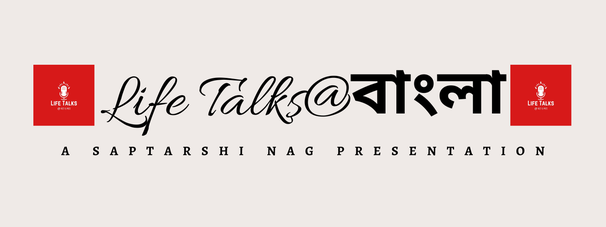Rank- 2nd
Author- Rahul Thapa
Age-28
Qualification- B.com (Hons)

India has always been referred to as the land of mysticism where a distinction between real and conjuring is far and wide. The land which is the birthplace of the Vedas, the Puranas, as well as the epics, also has a “contrary” existence to it. India is a land of paradox, where, in the garb of mysticism there are also astonishing advancements in science and technological arenas.
The dawn of our civilization started in the Chalcolithic Age of the Indus valley civilization which apart from being a very advanced society also had some engineering marvels unheard in those times. The Great Bath, the Great granary, wide roads, non-encroachment of roads, covered drains and dustbins in every street were the hallmarks of the advancements. Perhaps this is where our government can draw or has drawn inspiration for its smart cities program.
Albert Einstein once said-
“We owe a lot to the Indians, who taught us how to count, without which no worthwhile scientific discovery could have been made.”
Ancient Indian discoveries were so advanced that even now their application is valid and used in our mundane lives. The discovery of iron was an epoch-making event that helped create bigger cities and changed the course of time. If the Nanda or Mauryan age was a period of Imperial hegemony, the Gupta age was a period of scientific hegemony never seen before. Much unprecedented progress in the field of science, medicine, and metallurgy was witnessed. From Dhanvantri and Bagavatta known for their medical sciences to Sushruta the famous surgeon who belonged to this age. Detailed works on veterinary and several treatises were published. The age also witnessed the invention of the zero by Aryabhatta. The decimal system, binary numbers by Pingala in his work Chandahsastra are some of the other wonders of that age.
Indians were also well versed with the Pythagoras theorem. The iron pillar at Mehrauli near Qutub Minar is a metallurgical wonder which shows the highest perfection achieved with the pillar being free from rust till this day.

Aryabhatta in his treatise Surya Siddhanta discusses the movement of the earth around the sun and the diurnal annual courses. Another astronomer Brahmagupta discovered several centuries before Newton the gravitational force and its applications. Since then the lure of these advancements saw foreign invasion with rulers not just providing patronage but also being influenced by India’s scientific advances. According to Dr. Iswari Prasad, the Arab rule in India saw a role reversal with the Arabs themselves being influenced by India and its discoveries. Brahma Siddhanta and Khadya khandaka two Sanskrit works of Brahmagupta were translated into Arabic under the patronage of Caliph Mansur. Amir Khasrau writes in his work how Arab astronomer Abu Mashar studied astronomy in Varanasi. With the coming of the Islamic age, there were new variations to our scientific advancement.
Science was highly patronized by the Delhi Sultanate and the Mughals. Mathematics by Narayana Pandit in his work Bijaganitavatamsa is a gem of its time. Gandhara who wrote Lilavati and Karamdipka gives rules for the trigonometric terms. Jahangir in his work Tuzuk-i-Jhangiri recorded observations of breeding and hybridization of plants and trees.
Akbar took to a special interest in producing good breeds of domestic animals like horses and elephants due to the advancement in sciences offered that time. The growth in astronomy also grew no bounds with Mahendra Suri a courtier in the court of King Firuz Shah Tughlaq developing an astronomical instrument Yantraja. Maharaja Sawai Jai Singh -II was a patron in setting up several astronomy observatories in Delhi, Jaipur, Ujjain, and Mathura. Another scholar in the Mughal court of Akbar, Fethullah Shirazi was credited with the invention of anti-infantry volley guns and with several gun barrels. The field of medicine saw patronage by the Muslim rulers in the form of Ayurveda and Unani.
India has now mastered the art of space programs with aplomb. The launching of our first satellite ‘Aryabhatta’ was a testimony to our prowess. Dr. Vikram Sarabhai is rightfully referred to as the father of Indian space programs. His constant contact with NASA helped India gain access to satellite TV and even in the field of education, he is one of the founding members of IIM Ahmedabad.
Such is India’s voracious appetite to excel in every frontier of science that it launched the Mars mission Mangalyaan to quench its thirst of the knowledge of the planet and was successful in its first attempt with optimal cost. Chandrayaan 2 mission also a successful operation which after suffering a technical snag was launched to study the moon as well as to undertake a soft landing which is mastered by only the likes of USA, Russia, and China. The rover will study the moon surface and land on its South Pole, the area considered to be the darker side of the moon, something which no country has done before.
India space sciences are so cost-effective that foreign countries request for their payload to be launched using our technology. In 2017 our PSLV C-37 rocket launcher launched a total of 104 satellites into the orbit setting a world record unheard of. This not only gives goodwill but also adds foreign revenues to our GDP for which ISRO themselves have a commercial arm called Antrix.
Along with our space programs India is also building the first underground neutrino observatory in Theni district of Tamil Nadu. Neutrinos are subatomic particles and their presence is second only to photons, studying these particles will give scientists answers on the creation of the world and other fundamental aspects of nuclear fusion that powers sun and stars along with holding ground on the creation of the universe.
Challenges in this field are plenty, from low budgetary allocations to limiting private participants there needs to be more push in India’s meteorological rise in sciences. The government has included schemes like Atal tinkering labs to help young students develop a scientific and rational curriculum or the Young Scientist Program (Yuvika), in which it aims at imparting basic knowledge in sciences and technology so as to arouse an interest in space sciences.
Science in India is still evolving although our inventions and discoveries since time immemorial have a long and proud tradition of scientific excellence which can only be further excelled with the right will, proper investments, transparent policies, and greater capitalization.









